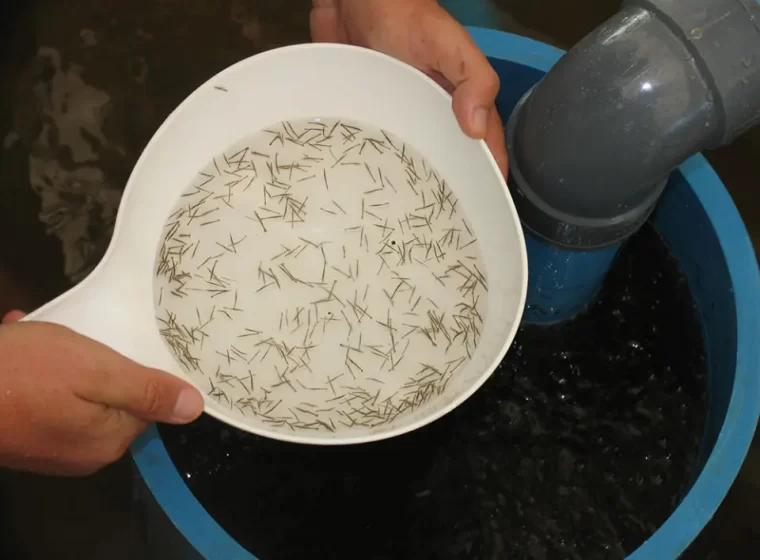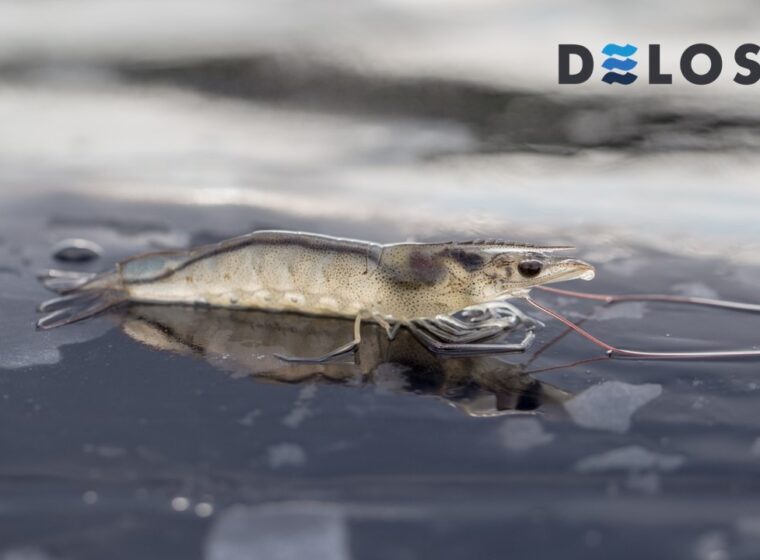During shrimp farming, farmers must constantly monitor the condition and growth of shrimp in the ponds. This is usually done through periodic sampling of the shrimp.
Sampling involves periodically observing the shrimp by taking several specimens from each pond for further examination. This activity is crucial to prevent adverse events in shrimp farming, such as disease outbreaks or suboptimal shrimp growth.
So, what are the objectives and benefits of sampling? Let’s find out in the following article!
Also Read: Using Probiotics for Shrimp Health, What’s the Impact?
What is Shrimp Sampling?
Shrimp sampling is the periodic observation of shrimp by taking several specimens from each pond for further examination. This is done to assess shrimp growth and condition and estimate their feeding requirements.
Sampling is typically conducted periodically from the time the shrimp post-larvae are stocked in the ponds until shortly before harvesting. Shrimp can be collected from different parts of the pond or through netting and then physically examined and tested in the laboratory.
Objectives of Shrimp Sampling
1. Assessing Shrimp Condition
One of the main objectives of sampling is to assess the condition of the shrimp. The observations from sampling serve as a basis for making decisions related to shrimp farming treatments. For instance, if signs of disease are detected, the farmers can promptly take mitigation measures after identifying the issue through sampling.
2. Evaluating Shrimp Uniformity
Shrimp populations are considered good when the size and weight are relatively uniform. To determine this, sampling can be carried out at a specific age of the shrimp, and then the weight and size uniformity can be observed. Knowing the uniformity helps farmers plan the appropriate feed management.
3. Calculating the Survival Rate
Shrimp sampling is also useful for calculating the survival rate (SR) over a specific period. The survival rate is determined by dividing the shrimp biomass by the initial number of post-larvae stocked and then multiplying it by 100%.
4. Calculating Average Body Weight
The average body weight (ABW) is the average weight of shrimp in a population during a specific period. ABW is calculated by dividing the total weight of the sampled shrimp by the number of shrimp collected.
5. Calculating Shrimp Biomass
Biomass refers to the total weight of shrimp in a population during a specific period, expressed in weight units. Shrimp biomass can be estimated by multiplying the survival rate (SR) with the initial population and then multiplying it by the ABW at a specific time.
6. Measuring Shrimp Size
Sampling is also used as a basis for measuring shrimp size. Shrimp size can be determined by counting the number of shrimp per 1 kg. For example, if there are 90 shrimp in 1 kg, it is referred to as “size 90.”
7. Assessing Pond Bottom Conditions
Sampling can also be beneficial for assessing the condition of the pond bottom. This can be done by observing the sediment brought up when casting the net in the pond for sampling. Observations are made to determine if there are shrimp deaths within acceptable limits.
Also Read: Challenges in Aquaculture Industries: Building a Sustainable Future
Types of Shrimp Sampling in Shrimp Farming
1. Larvae Sampling
Larvae sampling is conducted to estimate the population size and quality of shrimp post-larvae that will be stocked into the ponds. This is done by randomly collecting a sample of larvae and transferring them to a container for further evaluation. The larvae can be observed under a microscope, undergo stress tests, activity tests, and their numbers are counted.
2. Corner Pond Sampling (Anco)
Corner pond sampling is done with the help of corner nets in each pond. The corner nets are useful for capturing small-sized shrimp. Typically, anco sampling is conducted when the shrimp have reached 25-35 days of age and are not too large.
3. Net Sampling
The last type of sampling in shrimp farming is net sampling. As the name suggests, this sampling method involves using a net to capture shrimp from the pond. Net sampling is usually carried out when the shrimp have reached a relatively larger size (2.5 grams) or at around 30 days after stocking.
Also Read: These are 11 Characteristics of Healthy and Diseased Shrimp
Trust Your Vannamei Shrimp Farming with DELOS!
Sampling is one of the essential activities that should be carried out throughout shrimp farming. This activity is essential for monitoring shrimp conditions and preventing adverse events during the farming process.
Now, you can run your shrimp farming more efficiently with DELOS. DELOS is a leading aquatech company based on science, technology, and operational management that can assist you in managing and improving the productivity of your ponds.
DELOS’s farm management is integrated with the AquaHero application, which allows farm owners and technicians to monitor shrimp ponds daily.
Are you uncertain about your pond’s needs? DELOS also offers the AquaLink program, which can help you obtain and sell shrimp farming necessities at the best prices.
Contact DELOS Team via contact@delosaqua.com or submit through the contact form on our website www.delosaqua.com to learn more about our Farm Management and integrated supply chain programs. Trust your vannamei shrimp farming to DELOS!




